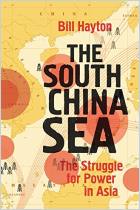
Read or listen offline
Amazon KindleRecommendation
The South China Sea, for decades the site of tensions over competing territorial claims, has become a geopolitical hot spot since Beijing accelerated a series of land grabs and began installing large-scale military infrastructure on artificial islands. China now stands poised to achieve dominance over the sea. Foreign policy analyst Ely Ratner outlines the geopolitical stakes of China’s bid for hegemony and suggests how American policy makers should meet the threat of Chinese ascendancy in the South China Sea.
Summary
About the Author
Ely Ratner is Maurice R. Greenberg Senior Fellow in China Studies at the Council on Foreign Relations. He served as deputy national security adviser to former US vice president Joe Biden.














Comment on this summary or Iniciar a Discussão